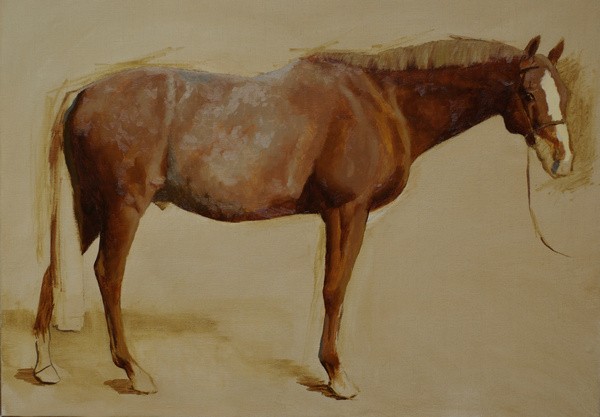
Portrait of Flash: New painting step 5
Nov 28, 2012
I've laid down most of the body in one long painting session. Actually a morning and afternoon in the studio with lunch and a nap in between. I paint much better when I'm rested. Some of the half-tone areas will need more work, but by getting everything down at once I've kept some of the...
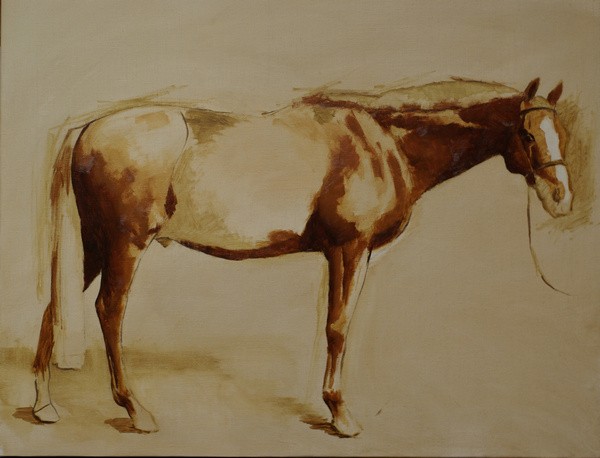
Portrait of Flash: New painting step 4
Nov 26, 2012
With the paint from the previous washes still wet I've started to apply the dark shadows using a mix of burnt sienna and ultramarine then I've applied a halftone right next to it. I thinned the paint just a little and applied it with a sable brush....
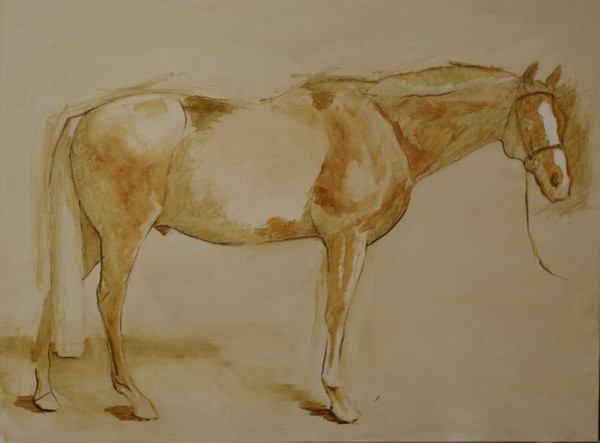
Portrait of Flash: New painting step 3
Nov 26, 2012
In this stage I've basically started the process of separating the shadow areas from the lit areas. I've done this with a thin wash of "faux umber", a mix of ultramarine, burnt sienna and yellow ochre applied very thinly. After that I put in some of the half tones in the lit areas to hel...
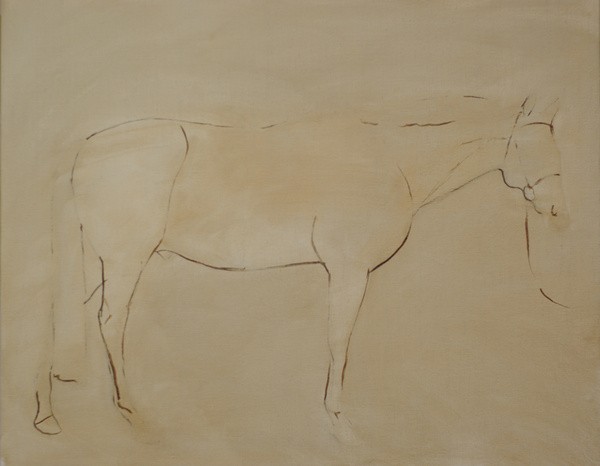
Portrait of Flash: New painting step 2
Nov 25, 2012
I painted over the outline of the horse with a fine liner brush. I used thin paint with Liquin and left it to dry for a couple of days then I applied a thin wash of burnt sienna and ivory black over the top of it. This is a backwards way of painting. After wiping down the wash with a paper tow...

Starting a new painting
Nov 21, 2012
The start of a new painting. 24x30 in oil on Claessens #12DP. I've outlined the horse in Conte crayon so that I can play around with the design and get the drawing down very accurately before putting paint on the canvas. I've erased most of the lines I used to place the crit...
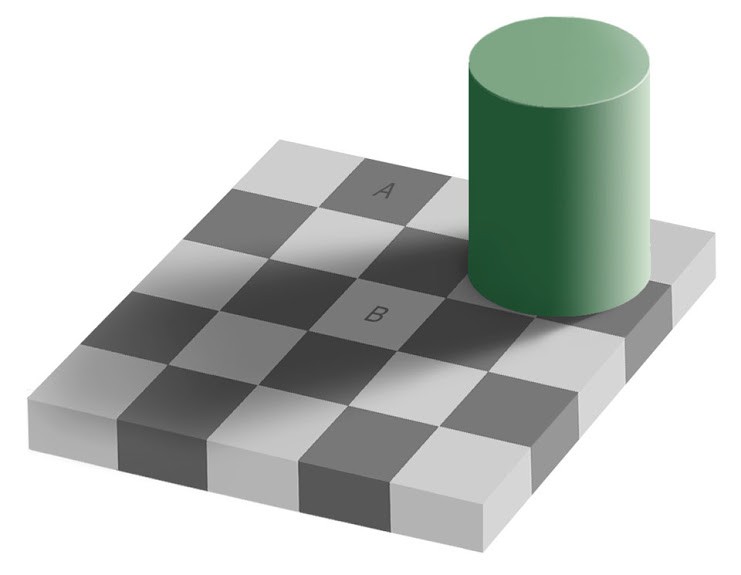
The illusion of value in the shadows vs the lit areas
Nov 14, 2012
In this famous illusion that I've taken from Wikipedia, the value (that is, the darkness) of area A is exactly the same as the value of area B. This is really hard to see, even if you squint for all you're worth. Bear this in mind when painting lighter areas in the shadows - they are never as ...